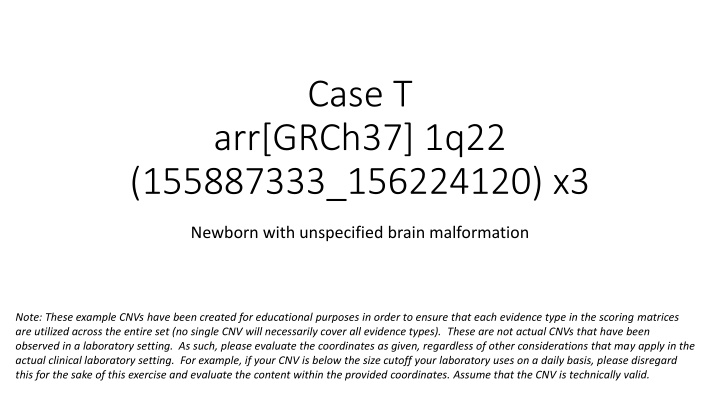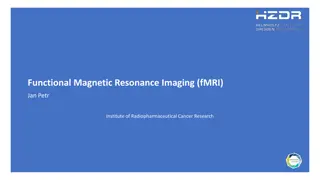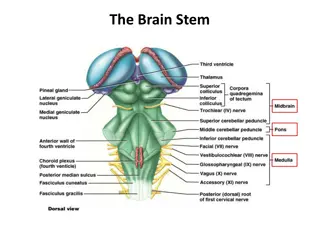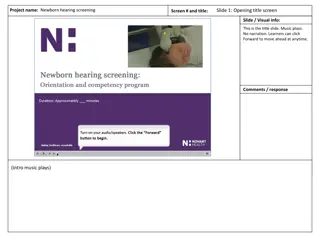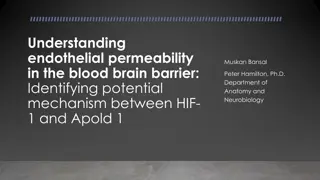Newborn with Unspecified Brain Malformation
Evaluate a case study involving a newborn with unspecified brain malformation, showcasing a 1q22 duplication. The assessment covers genomic content, gene overlap, gene number, and detailed evaluation. The duplication involves multiple protein-coding genes, including LMNA and BGLAP, potentially linked to craniosynostosis. The clinical information utilizes the GAIN scoring metric for analysis.
Uploaded on Mar 09, 2025 | 0 Views
Download Presentation

Please find below an Image/Link to download the presentation.
The content on the website is provided AS IS for your information and personal use only. It may not be sold, licensed, or shared on other websites without obtaining consent from the author.If you encounter any issues during the download, it is possible that the publisher has removed the file from their server.
You are allowed to download the files provided on this website for personal or commercial use, subject to the condition that they are used lawfully. All files are the property of their respective owners.
The content on the website is provided AS IS for your information and personal use only. It may not be sold, licensed, or shared on other websites without obtaining consent from the author.
E N D
Presentation Transcript
Case T arr[GRCh37] 1q22 (155887333_156224120) x3 Newborn with unspecified brain malformation Note: These example CNVs have been created for educational purposes in order to ensure that each evidence type in the scoring matrices are utilized across the entire set (no single CNV will necessarily cover all evidence types). These are not actual CNVs that have been observed in a laboratory setting. As such, please evaluate the coordinates as given, regardless of other considerations that may apply in the actual clinical laboratory setting. For example, if your CNV is below the size cutoff your laboratory uses on a daily basis, please disregard this for the sake of this exercise and evaluate the content within the provided coordinates. Assume that the CNV is technically valid.
Clinical Information arr[GRCh37] 1q22 (155887333_156224120) x3 Newborn with an unspecified brain malformation Use the GAIN scoring metric
Section 1: Initial Assessment of Genomic Content Case T Genes Involved Would apply category 1A (contains protein-coding or other known functionally important elements), as this duplication involves several protein-coding genes. 0 points; continue evaluation Total: 0 points
Section 2: Overlap with Established TS, HI, or Benign Genes/Genomic Regions Case T ClinGen Curated Track: Empty CNV T does not overlap with any established HI, TS, or benign genes/gnomic regions. Section 2 is n/a. Total: 0 points
Section 3: Evaluation of Gene Number CNV S contains 16 protein-coding genes (Category 3A: 0 points). Total: 0 points
Section 4: Detailed Evaluation of Genomic Content PubMed search for 1q22 duplication Sowinska-Seidler et al. 2018 (PMID:29845577) describe a male child with metopic and unilateral lambdoid synostosis, muscular hypotonia, developmental delay, and dysmorphic features. De novo 1.26 Mb duplication at 1q22q231 identified Only other testing reported on the proband was a 550 band karyotype Authors proposed that overexpression of LMNA and BGLAP, two genes involved in osteoblast differentiation, may be involved in the phenotype These two genes are included in CNV T The authors showed increased expression of each in patient-derived blood samples as compared to controls, but no other functional studies were performed to validate the claim that this contributes to the craniosynostosis phenotype.
1q22 duplication search, continued Fichera et al. 2014 (PMID: 25540671) Describe a family with a 290 kb duplication at 1q22 segregating with behavioral problems with or without intellectual disability 2 adult family members also displayed symptoms of inflammatory disease Previous testing on the proband included karyotype, Fragile X testing, and screening for neurometabolic disorders Subsequent family members only tested for the presence/absence of the duplication
Case T Fichera et al. family Soinska-Seidler et al. dn
Assessing the information The phenotypes presented in Fichera et al. and Sowinska-Seidler et al. are seemingly disparate. Should this count as negative evidence? No. The variant observed in Sowinska-Seidler is much larger than CNV T or the variant observed in Fichera et al. Even though all 3 variants overlap, the seemingly disparate phenotype could be due to the additional genomic content duplicated in the larger variant. It is also possible the phenotypes reported in Fichera and/or Sowinska-Seidler are not related to the observed duplications, given the genetic heterogeneity associated with both neurodevelopmental disorders and craniosynostoses, and the relatively limited testing done on each proband. At best, the Fichera family (the CNV closest in size to CNV T) can be scored 0.30 points for 6 segregations (Category 4G). Also evaluate the individual genes within the CNV for evidence of triplosensitivity. Total: 0.30 points
Which genes should we focus on first? 4 genes in the region are OMIM Morbid let s investigate them further.
Though this condition is AR, our patient was referred for unspecified brain malformation. This entry is designated with a ?, meaning that the relationship between this gene and that disease presentation is provisional. OMIM documents a single report of 2 brothers in a consanguineous family with this phenotype and a frameshift variant in this gene identified on exome sequencing. This is not convincing evidence, but it may be something to monitor over time, if the patient s phenotype is consistent.
Evaluated by ClinGen Dosage Sensitivity in 2016; TS score 0 Are any of these AD disorders caused by triplosensitivity? Literature review for triplosensitivity evidence for these genes and others in the region was uninformative as of August 2020.
Population Data Approximate length of CNV T No relevant population variants in gnomAD SV as of August 2020.
Population Data DGV Gold Standard Track: Empty No relevant population variants in the DGV Gold Standard dataset as of August 2020.
Section 5: Evaluation of Inheritance Pattern/Family History for Patient Being Studied Our patient is a newborn with a brain malformation. There has been a one report of a similarly-sized CNV segregating with neurodevelopmental phenotypes in a single family. Uncertain if this variant is the cause of the neurodevelopmental disorders in this family. Even if it was, given that it was a single family, the phenotypic spectrum may not be completely described. No other phenotypes were reported to us for our patient, and, since they are a newborn, it is uncertain what additional phenotypes may manifest as they are older. The inheritance of this variant is unknown in our patient. In the setting of so much uncertainty, utilize category 5F, inheritance information is unavailable or uninformative, 0 points. Total: 0.30 points
Conclusion Classification: Variant of Uncertain Significance Additional evidence is necessary to clarify the role of similar duplications in disease.
